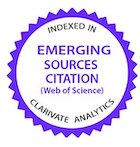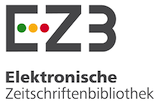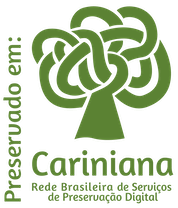Qualidade físico-química e microbiológica do leite bovino do Vale do Taquari no Rio Grande do Sul, Brasil
DOI:
https://doi.org/10.1590/1809-6891v23e-72986EResumo
O objetivo do presente estudo foi verificar a qualidade do leite cru refrigerado das propriedades produtoras de leite e do leite cru refrigerado, pasteurizado e Ultra High Temperature (UHT) das indústrias do Vale do Taquari no Rio Grande do Sul, Brasil. Foram realizadas análises de composição do leite, análises físico-químicas e análises microbiológicas, estabelecidas pela legislação, além de coliformes totais e termotolerantes, contagem de psicrotróficos nos três tipos de leite, contagem de mesófilos no leite pasteurizado e no leite UHT das indústrias. As coletas ocorreram em duas indústrias e 33 propriedades produtoras de leite. Em relação às propriedades, duas (6%) apresentaram leite com acidez acima do estabelecido pela legislação e três (9%) apresentaram leite com contagem bacteriana total (CBT) acima do estabelecido. O leite da indústria 1 apresentou acidez, CBT e densidade fora dos padrões estabelecidos. As duas indústrias e 53,2% das propriedades apresentaram leite com contagem de células somáticas (CCS) acima do determinado pela legislação. O leite das indústrias demonstrou maiores quantidades de CCS, CBT, psicrotróficos e coliformes totais e termotolerantes que o leite das propriedades produtoras de leite e o leite da indústria 1 apresentou maiores quantidades que a indústria 2, nos parâmetros microbiológicos.
Palavras-chave: Parâmetros físico-químicos; Parâmetros microbiológicos; Composição do leite.
Downloads
Referências
Oever SPVD, Mayer HK. Analytical assessment of the intensity of heat treatment of milk and dairy products. International Dairy Journal, 121 (105097), 2021. https://doi.org/10.1016/j.idairyj.2021.105097.
IBGE. Brazilian Institute of Geography and Statistics - Quarterly Milk Survey - 2nd quarter 2021. Accessed in November 2021. Available at: https://www.ibge.gov.br/estatisticas/economicas/agricultura-e-pecuaria/9209-pesquisa-trimestral-do-leite.html?=&t=destaques.
Brazil. Ministry of Agriculture, Livestock and Supply - MAPA. Normative Instruction N. 77, of November 26, 2018. Officializes the criteria and procedures for production, packaging, conservation, transport, selection and reception of raw milk in establishments registered with the official inspection service, in the form of this Normative Instruction and its Annex. Official Diary of the Union. Brasília.
Brazil. Ministry of Agriculture, Livestock and Supply - MAPA. Normative Instruction N. 76, of November 26, 2018. Officializes the technical regulations that establish the identity and quality characteristics that refrigerated raw milk must present. pasteurized milk and type A pasteurized milk, pursuant to this Normative Instruction and the Sole Annex. Official Diary of the Union. Brasília.
Brazil. Ministry of Agriculture, Livestock and Supply - MAPA. Ordinance N. 370, of September 4, 1997. Regulation of industrial and sanitary inspection of products of animal origin and technical regulation of identity and quality of U.H.T (U.A.T) milk. Official Diary of the Union. Brasília.
Kilic-Akyilmaz M, Ozer B, Bulat T, Topcu A. Effect of heat treatment on micronutrients, fatty acids and some bioactive components of milk. International Dairy Journal, 126 (105231), 2021. https://doi.org/10.1016/j.idairyj.2021.105231.
Brazil. Ministry of Agriculture, Livestock and Supply - MAPA. Normative Instruction n° 55, of September 30, 2020. Amends Normative Instruction n° 76, of November 26, 2018. Official Gazette, Brasília, September 30, 2018. 2020.
Metz M, Sheehan J, Feng PCH. Use of indicator bacteria for monitoring sanitary quality of raw milk cheeses - a literature review. Food Microbiology, 103283, 2019. https://doi.org/10.1016/j.fm.2019.103283.
ISO. International Organization for Standardization. ISO 13366-2:2006. Milk - Enumeration of somatic cells -Part 2: Guidance on the operation of fluoro-opto-electronic counters.
ISO. International Organization for Standardization. ISO. 9622:2013. Milk and liquid milk products - Guidelines for the application of mid-infrared spectrometry.
Gasparotto, PHG, Daud C, Silva FRC, Filho JVD, Marchi PGF, Souza FA, Gujanswski CA, Rodrigues DS. Analyzes of alizarol, acidity and formaldehyde of uht milk commercialized in the municipality of Ji-Paraná – Rondônia. Journal Veterinary Science - Public health. 7 (2), 084-096, 2020.
Brazil. Ministry of Agriculture, Livestock and Supply - MAPA. Manual of Official Methods for the Analysis of Foods of Animal Origin. 2nd, 2019.
ISO. International Organization for Standardization. ISO 6731:2010. Milk. cream and evaporated milk - Determination of total solids content (Reference method).
ISO. International Organization for Standardization. ISO 22662: 2007. Milk and milk products - Determination of lactose content by high-performance liquid chromatography (Reference method).
NMKL – Nordval Internacional. NMKL 40. 2005. 2nd Ed. Fedt. Bestemmelse i mælk ved butyrometer-(Gerber) metoden. Fat content. Determination in milk using a butyrometer - the Gerber method.
ISO. International Organization for Standardization. ISO 8968-1:2014. Milk and milk products-Determination of nitrogen content- Part 1: Kjeldahl principle and crude protein calculation.
ISO. International Organization for Standardization. ISO 21187:2004. Milk. Quantitative determination of bacteriological quality - Guidance for establishing and verifying a conversion relationship between routine method results and anchor method results.
Apha. Standard methods for the examination of dairy products. 17th Edition 2004.
ISO. International Organization for Standardization. ISO 4831:2006. Microbiology of food and animal feeding stuffs - Horizontal method for the detection and enumeration of coliforms - Most probable number technique.
Ribeiro Júnior JC, Oliveira AM, Silva FG, Tamanini R, Oliveira ALM, Beloti V. The main spoilage-related psychrotrophic bacteria in refrigerated raw milk. Journal of Dairy Science,101 (1), 75-83, 2018. https://doi.org/10.3168/jds.2017-13069.
Ndahetuye JB, Artursson K, Båge R, Ingabire A, Karege C, Djangwani J, Nyman, A, Ongol MP, Tukei M, Persson Y. Milk Symposium review: Microbiological quality and safety of milk from farm to milk collection centers in Rwanda. Journal of Dairy Science, 103 (11), 9730-9739, 2020. https://doi.org/10.3168/jds.2020-18302.
Carrillo-Lopez LM, Garcia-Galicia IA, Tirago-Gallegos JM, Sanchez-Veja R, Huerta-Jimenez M, Ashokkumar M, Alarcon-Rojo AD. Recent advances in the application of ultrasound in dairy products: Effect on functional, physical, chemical, microbiological and sensory properties. Ultrasonics Sonochemistry, 73 (105467), 2021.
Arbello DDR, Braccini VP, Jiménez ME, Erhardt MM, Richards NSPS. Análise microbiológica e físico-química do leite produzido no município de Santana do Livramento – Rio Grande do Sul. Pesquisa. Sociedade e Desenvolvimento, 10 (6), e24310615561, 2021. DOI: http://dx.doi.org/10.33448/rsd-v10i6.15561.
Panciere BM, Ribeiro LF. Detecção e ocorrência de fraudes no leite fluido ou derivados. Getec,10 (26), 1-17, 2021.
Manske GA, Schogor ALB, Ribeiro LF. Leite instável não-ácido: revisão. Getec,10 (28), 84-92, 2021.
Priyashantha H, Lundh A. Graduate Student Literature Review: Current understanding of the influence of on-farm factors on bovine raw milk and its suitability for cheesemaking. Journal of Dairy Science, 104 (11), 12173-12183, 2021. https://doi.org/10.3168/jds.2021-20146.
Skeie SB, Haland M, Thorsen IM, Narvhus J, Porcellato D.Bulk tank raw milk microbiota differs within and between farms: A moving goalpost challenging quality control. Journal of Dairy Science, 102, 1959-1971, 2019. https://doi.org/10.3168/jds.2017-14083.
Costa HN, Lahen CFA, Malacco VMR, Belli AL, Carvalho AU, Facury EJ, Molina LR. Frequency of microorganisms isolated at different stages of lactation and milk production loss associated with somatic cell count and to mastitis-causing pathogens. Arquivo Brasileiro de Medicina Veterinária e Zootecnia, 71 (2), 393-403, 2019. http://dx.doi.org/10.1590/1678-4162-10185.
Baggio AP, Montanhini MTM. Qualidade de leite cru produzido na região do Norte Pioneiro do Paraná. Revista Brasileira de Higiene e Sanidade Animal, 14 (3), 1 – 9, 2020. http://dx.doi.org/10.5935/1981-2965.20200030.
Narvhus JA, Baekklund ON, Tidemann EM, Ostlie HM, Abrahamsen RK. Isolates of Pseudomonas spp. from cold-stored raw milk show variation in proteolytic and lipolytic properties. International Dairy Journal, 123 (105049), 2021. https://doi.org/10.1016/j.idairyj.2021.105049.
Mariotto LRM, Daniel GC, Gonzaga N, Mareze J, Tamarini R, Vanerli B. Potencial deteriorante da microbiota mesófila, psicrotrófica, termodúrica e esporulada do leite cru. Ciência Animal Brasileira, 21, e44034, 2020.
Paludetti LF, Kelly AL, Gleeson D. Effect of thermoresistant protease of Pseudomonas fluorescens on rennet coagulation properties and proteolysis of milk. Journal of Dairy Science, 103, 4043–4055, 2020. https://doi.org/10.3168/jds.2019-17771.
Lau S, Trmicic A, Martin NH, Widemann M, Murphy SI. Development of a Monte Carlo simulation model to predict pasteurized fluid milk spoilage due to post-pasteurization contamination with gram-negative bacteria. Journal of Dairy Science, n. 105, 2021. https://doi.org/10.3168/jds.2021-21316.
Downloads
Publicado
Como Citar
Edição
Seção
Licença
Copyright (c) 2022 Ciência Animal Brasileira / Brazilian Animal Science

Este trabalho está licenciado sob uma licença Creative Commons Attribution 4.0 International License.
Autores que publicam nesta revista concordam com os seguintes termos:
- Autores mantém os direitos autorais e concedem à revista o direito de primeira publicação, com o trabalho simultaneamente licenciado sob a Licença Creative Commons Attribution que permite o compartilhamento do trabalho com reconhecimento da autoria e publicação inicial nesta revista.
- Autores têm autorização para assumir contratos adicionais separadamente, para distribuição não-exclusiva da versão do trabalho publicada nesta revista (ex.: publicar em repositório institucional ou como capítulo de livro), com reconhecimento de autoria e publicação inicial nesta revista.
- Autores têm permissão e são estimulados a publicar e distribuir seu trabalho online (ex.: em repositórios institucionais ou na sua página pessoal) a qualquer ponto antes ou durante o processo editorial, já que isso pode gerar alterações produtivas, bem como aumentar o impacto e a citação do trabalho publicado (Veja O Efeito do Acesso Livre).






























